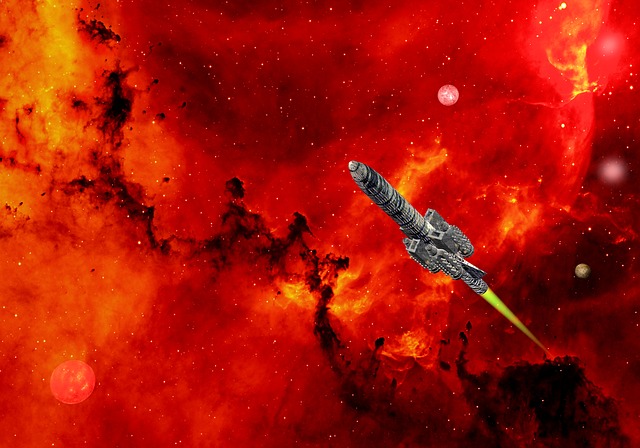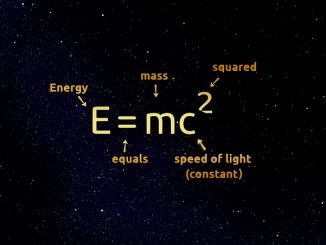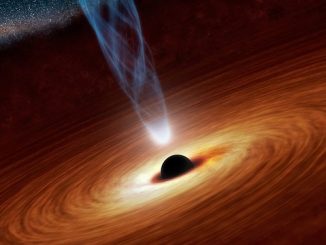
There is a new propulsion system that could finally bring a manned spacecraft to Mars. Dubbed as the X3, this is an ion thruster developed by researchers from the University of Michigan (U-M), in cooperation with NASA and the US Air Force.
To sort of give you some general information about the ionic force-in order for a spacecraft to move forward, the rockets must be powerful enough to create thrust. This force or push, is made by propelling some type of material out of the rocket’s exhaust. Chemical thrusters rely on burning liquid or solid fuel for propulsion. Ion thrusters, on the other hand, accelerate a propellant material to high speeds and release the resultant plasma (ionized gas) to produce thrust.
When NASA announced the Next Space Technologies for Exploration Partnerships (NextSTEP) in 2016, thrusters were one of the projects of the program. NASA granted $6.5 million over three years to California-based rocket manufacturer Aerojet Rocketdyne to develop an ion propulsion system known as the XR-100. The X3 thruster is a key component of XR-100 and U-M researchers got $1 million from that grant for their work.
There are several types of ion thrusters and X3 is classified as a Hall thruster. A Hall thruster (also referred to as Hall-effect thruster, after discoverer Edwin Hall) uses an electric field to accelerate the propellant material. The process starts when electrons run through a circular channel and collide with atoms of a propellant (xenon is commonly used). The collisions knock electrons off and turn atoms into positively-charged ions. The process also creates a powerful electric field that pulls the plasma out of an exhaust, which in turn, generates the thrust.
At a recent demonstration at NASA’s Glenn Research Center in Ohio, the X3 broke several records achieved by any Hall thruster. “We have shown that X3 can operate at over 100 kW of power,” said Alec Gallimore, lead researcher and U-M’s dean of engineering, in an interview with Space.com. “It operated at a huge range of power from 5 kW to 102 kW, with electrical current of up to 260 amperes. It generated 5.4 Newtons of thrust, which is the highest level of thrust achieved by any plasma thruster to date.”
Generally, an ion thruster has a few advantages over a chemical-powered rocket. For starters, an ion thruster can drive a spacecraft to speeds of up to 40 kilometers per second; its chemical counterpart can only manage 5 kilometers per second. Secondly, an ion thruster has ten times more fuel efficiency which is ideal for space travel. Chemical rockets need to bring their fuel supply for the whole journey and that load means more mass and additional fuel requirement for take-off.
That said however, an ion thruster has limitations. The system has low thrust and it must operate first for quite a long time before it can actually accelerate any given spacecraft to high speeds. Thus, the ion thrust as a system is not suitable for launching spacecrafts given that it’s not powerful enough to overcome Earth’s gravity.
Gallimore’s team though was able to address those limitation with the X3: “We figured out that instead of having one channel of plasma, where the plasma generated is exhausted from the thruster and produces thrust, we would have multiple channels in the same thruster…We call it a nested channel,” Gallimore said.
Since the team started work in 2009, they initially made a two-channel thruster called the X2 before they came up with the more powerful X3, which contains three concentric channels.
Next year, Gallimore’s team plans to run a bigger test to prove that the X3 can operate at full power for 100 hours. And to prevent potential failures from several thousand hours of usage, a magnetic shielding system will be installed to keep the plasma away from the walls of the thruster. This feature should prevent damages and enable the X3 to operate reliably for longer periods of time, like several years at maximum power. It’s hoped that the new propulsion technology could take humans to the Red Planet within the next 20 years. However, Mars could be a popular destination by 2024 if Elon Musk succeeds in launching the BFR, SpaceX’s largest space transport system ever.
- Bulenox: Get 45% to 91% OFF ... Use Discount Code: UNO
- Risk Our Money Not Yours | Get 50% to 90% OFF ... Use Discount Code: MMBVBKSM
Disclaimer: This page contains affiliate links. If you choose to make a purchase after clicking a link, we may receive a commission at no additional cost to you. Thank you for your support!




Leave a Reply